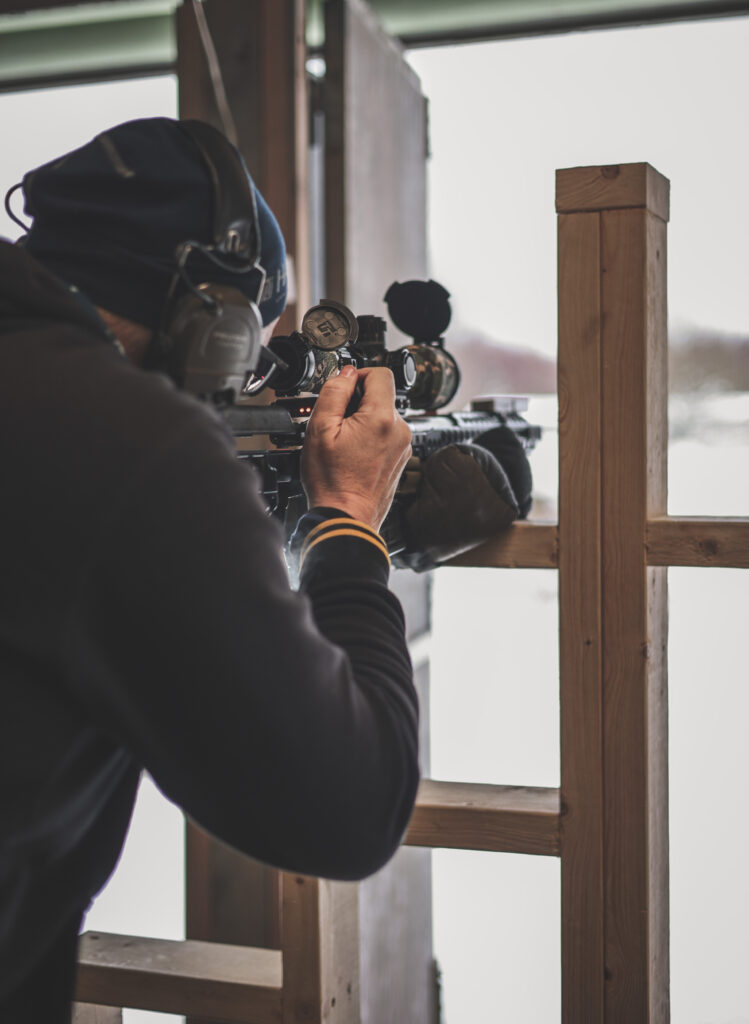Previously we did a test of how different muzzle devices affect the time it takes you to get back to the target when you are shooting. Typically recoil tests focus on the impulse force, but that does not show the full picture. The length of the impulse and how that connects to your body differs between different devices. Hence measuring thow far back the rifle goes when you shoot is not the best way to measure. In this experiment we measure the time from the shot fired until the shooter is back in the target again to get a more practical measure of how good a device is.
The setup
The test measures the time from shot fired until the shooter is back on the target in a controlled manner using a Triggercam 2.1 that records the shot through the scope. The target is 15cm (6″) at 300m (330yds), so not too much wiggle room. We shot 5 shots per device. The T.S.G Ymir muzzle brake is used as a reference so that you can relate to this and our previous test with a different caliber. The shooter was the same for all shots made and an effort was made to keep the same position behind the rifle for all shots. The shooting position was standing behind a skillstage on the top level to simulate a common PRS shooting position.
In the first session we used a 6mm creedmoor with a 115gr DTAC projectile and in the second test we used a 6.5 creedmoor shooting S&B 143gr projectiles. To make the results comparable we used the T.S.G Ymir brake as a reference. The difference between the impact of the caliber and bullet weight was surprisingly small. The rifle weighs approximately 9kg. Unfortunately the light conditions were pretty poor (it’s winter in Sweden now) so we had to lower the magnification a little more than ideal.
We filmed all shots and counted the frames from shot fired until the shooter was back at the target in a controlled way. The recording was 24 frames per second so the measure is pretty exact.
The following devices were tested:
In the first test (6mm Creedmoor w 115gr DTAC):
-Bare barrel without any device
-T.S.G Ymir muzzle brake
-Aimsport Triton II 50, telescopic suppressor
-Ase Utra Sl7 front mounted suppressor
-APW Warbird Match suppressor with a muzzle brake forend.
In the second test (6.5mm Creedmoor with 143gr S&B:
-T.S.G Ymir muzzle brake, perhaps the most common muzzle brake used in Swedish PRS competitions.
-A-tec PRS 3 gen 1, a suppressor with a muzzle brake forend.
-MiMa Titan Suppressor, a prototype telescopic suppressor.
-MiMa Titan 1 row, the same suppressor but with a muzzle brake on the end with one row of holes.
-MiMa Titan 2 row, same as above but with 2 rows of holes.
Test data
The first test, 6mm Creedmoor
| Muzzle device | Avg. time (s) | St. dev. (s) |
| Bare barrel | 2,750 | 0,520 |
| Ase Utra SL7 | 1,972 | 0,528 |
| Aimsport Triton 50s | 1,611 | 0,387 |
| APW Warbird Match | 1,058 | 0,163 |
| T.S.G Ymir | 1,092 | 0,350 |
Notes: Here you really see how much difference a brake or suppressor does. The difference between a bare barrel and the Ymir brake is 20s on a 12 shot stage, that’s the difference between getting all your shots off and timing out with 3-5 shots left in the mag. An interesting observation is that the standard deviation is a lot smaller for the Warbird than any of the other devices.
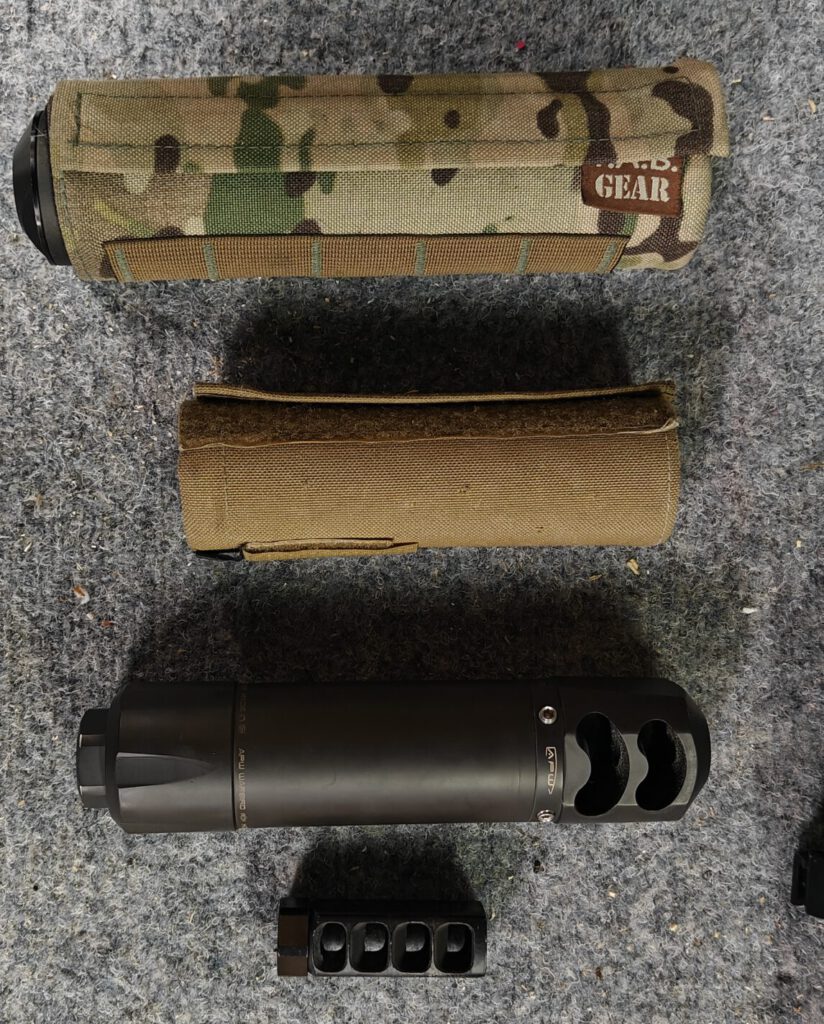
Aimsport Triton 50s, Ase Utra Sl7, APW Warbird Match, T.S.G Ymir brake
The second test, 6.5mm Creedmoor
| Muzzle device | Avg | StDev |
| A-tec PRS 3 gen 1 | 1.23 | 0.39 |
| MiMa Titan Suppressor | 1.26 | 0.51 |
| MiMa Titan 1 row | 1.17 | 0.09 |
| MiMa Titan 2 row | 1.03 | 0.10 |
| T.S.G Ymir Muzzle brake (reference) | 1.29 | 0.27 |
Notes: Here we shoot a heavier projectile but to our surprise the difference between the results for the Ymir brake is not very big. Another observation is that the standard deviation is lower for the devices combining suppressor and brake technology.

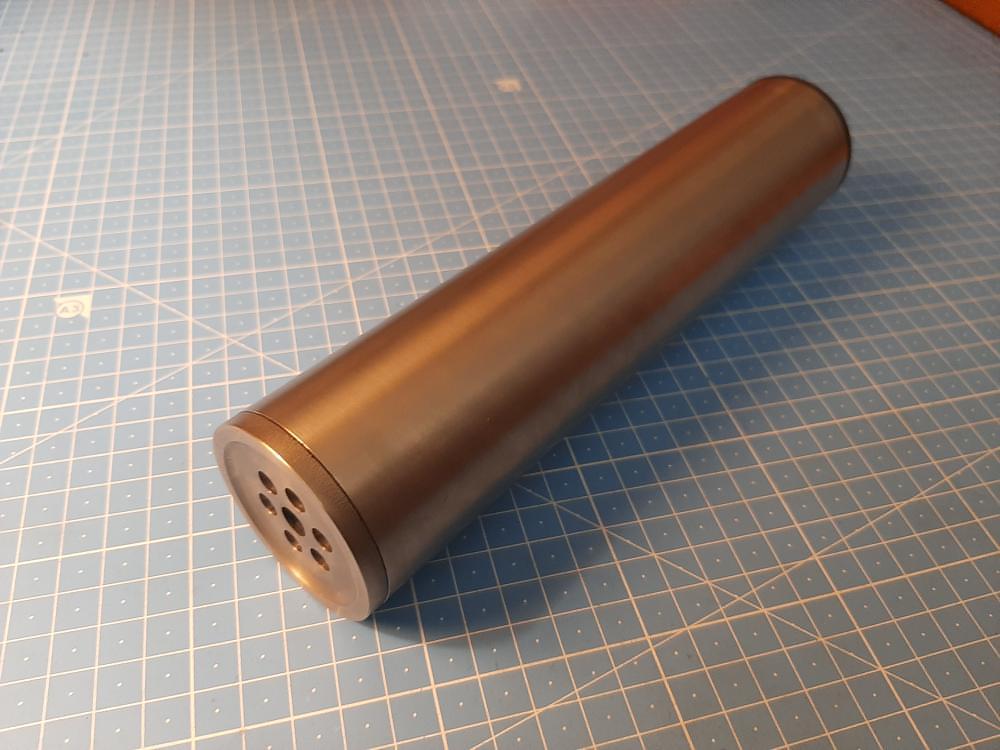
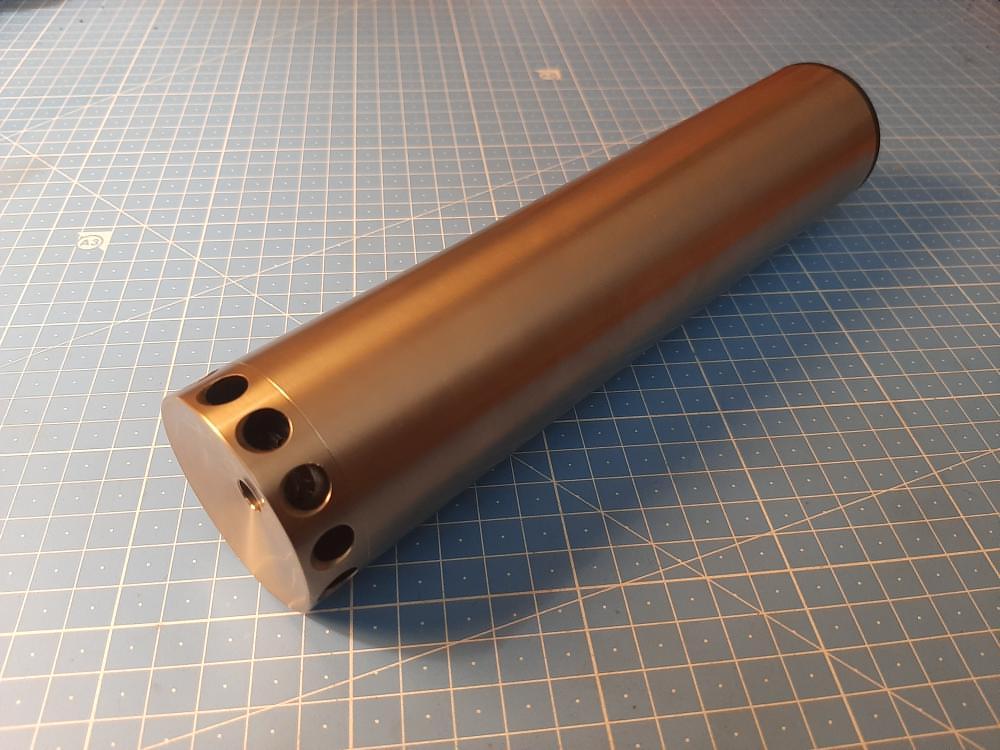
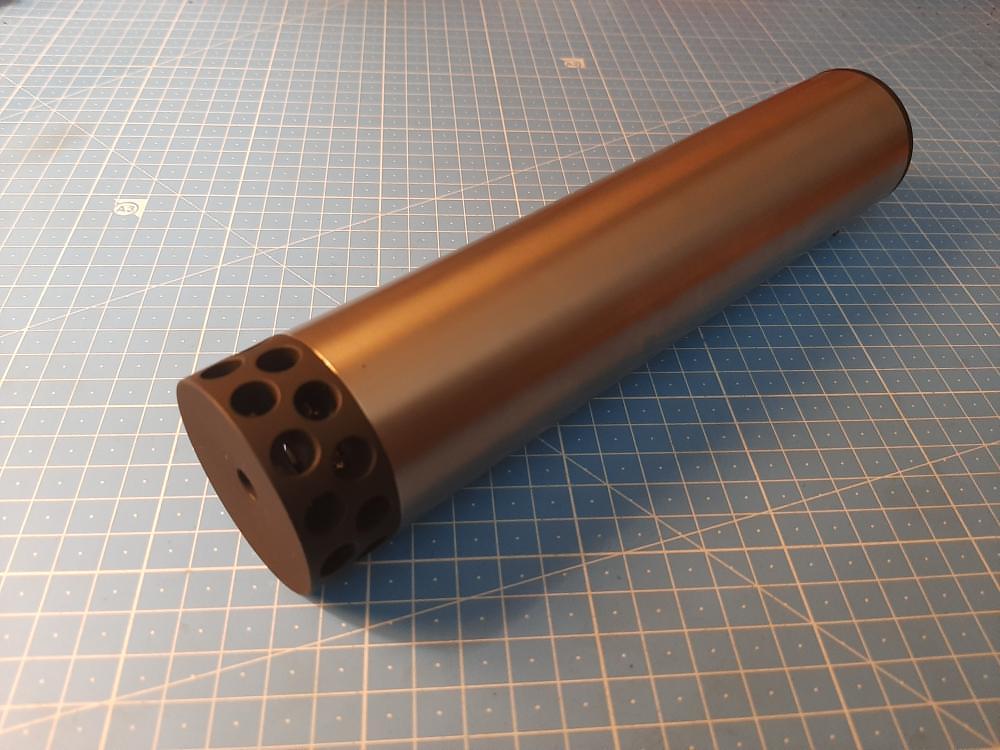
Summary and conclusion: A suppressor is much nicer to shoot than a brake, no doubt about it. In the first test it was aparent that hunting suppressors are better than a bare barrel, but combining with a brake attachment in the forend gives you an advantage.
The shooter in this test found the 2 row MiMa Titan as easiest/nicest to shoot but looking at the numbers there was very little difference in performance in the top tier devices.
A surprising (to the writer) finding is the good results of the combined suppressor/brake models. One thought is that with a muzzle brake you probably flinch more than you do with a suppressor due to the significantly higher (in dB) blast. So while the brake is more efficient in handling the recoil power, the combination lets you regain vision faster. The standard deviation measure also indicates that the time back to target is more consist
Could it be so that these hybrid things aren’t just a marketing trick? I’ll try one out now for a while and see how it feels.
Please note that 5 shots per device only gives you an indication, but still as in the second test, 25% faster to the target gives you a hint of the best device. For the recerence Ymir brake the heavier bullet added almost 20% to the return time which is as expected, but again, you need to test with far more shots to get statistically significant numbers.
Please give us a follow on Instagram @kikarskytt.se for more empirical tests as we aim (no pun intended) for the 2024 PRS World Championships in Colorado!


